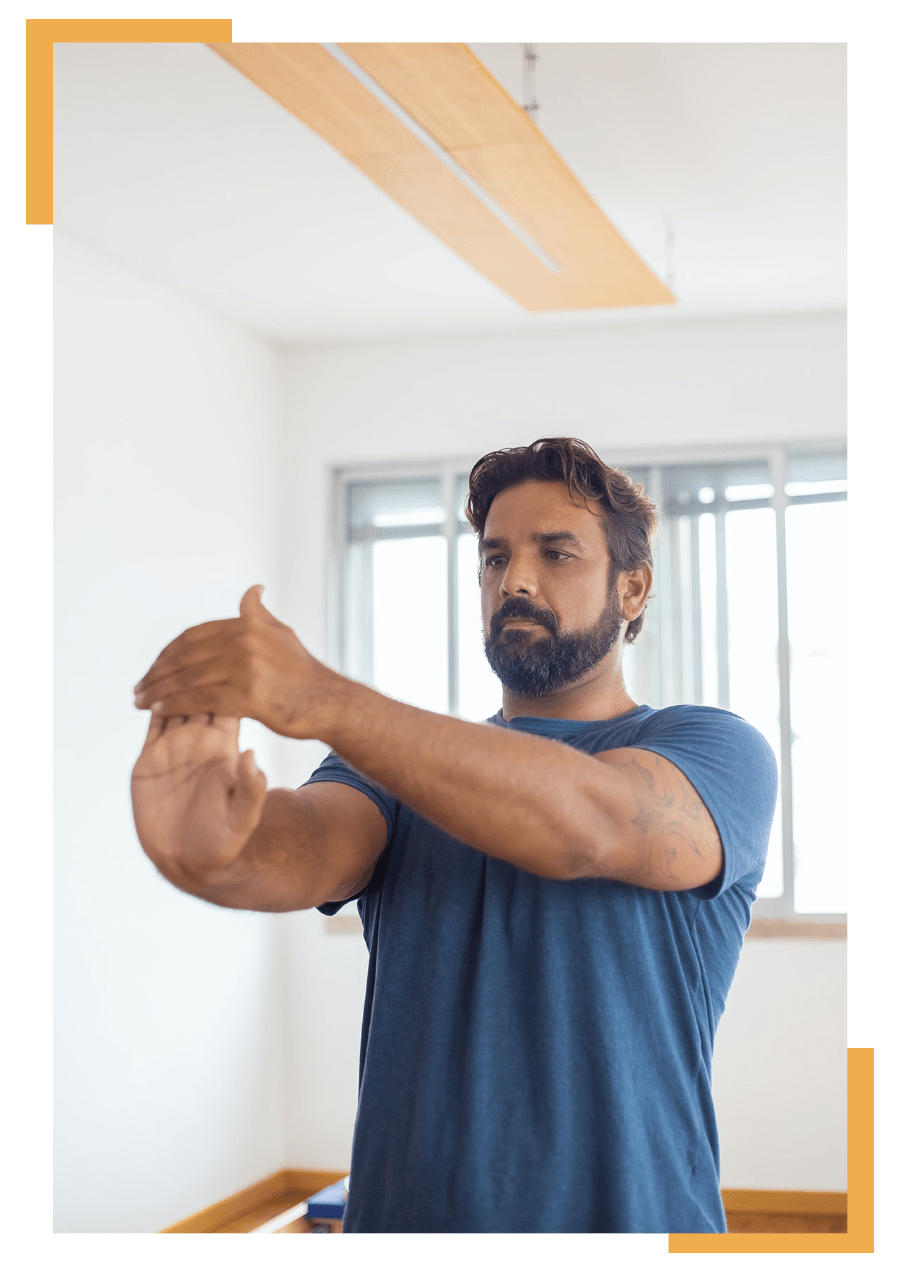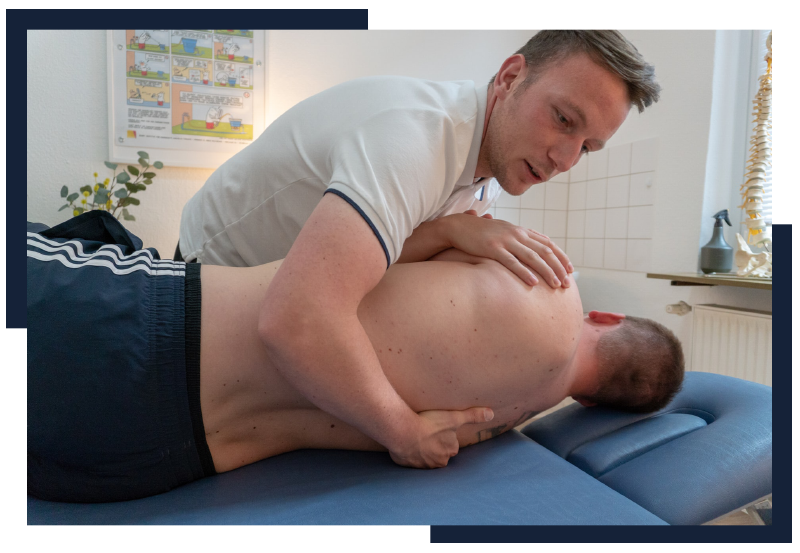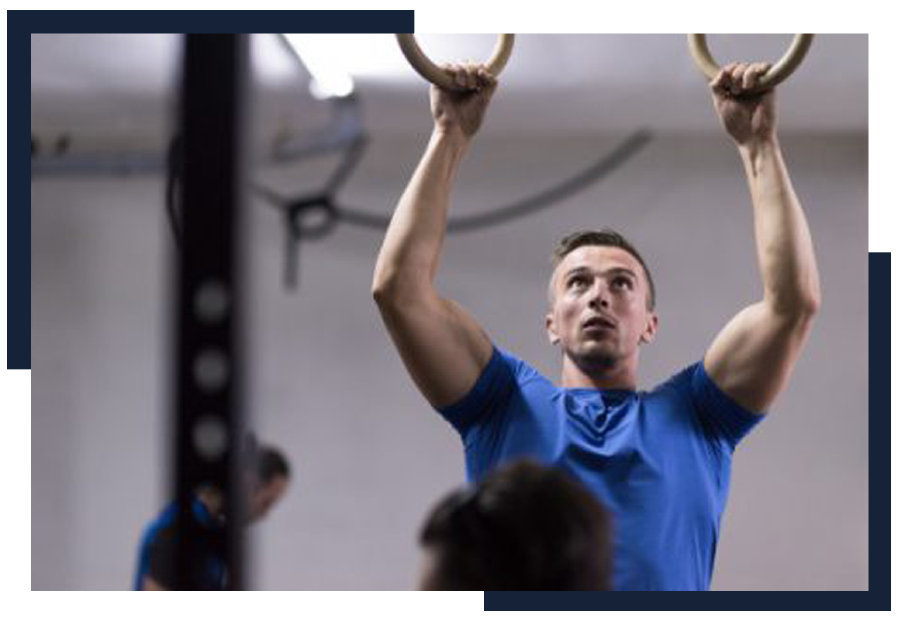Physical Therapy Clinic
Are you searching for “physical therapy near me”? Look no further than OneRehab, a multispecialty physical therapy clinic with years of experience. Our center specializes in helping patients live better, more fulfilling lives.

What is Physical Therapy?

Physical Therapy Practice Requirements

Benefits of Physical Therapy
Pain Reduction
Improving Mobility
Avoid Surgery
Recovery from Injuries and Illnesses
Illnesses such as stroke can make you lose some function or movement. When you engage in proactive physiotherapy, you get a customized treatment plan that can improve strength in the weak areas of the body. As a result, you gain improved gait and balance. With physical therapy after a stroke, you become more independent. You can dress, bathe or go to the toilet without assistance.
Apart from helping stroke patients, physiotherapy is useful in sports. It helps athletes recover quickly after an injury. Physical therapists use customized exercises to prepare teams and individuals. They assess areas of weakness and help improve them to prevent injury.
Improving Balance which Prevents Falls
Schedule an appointment today
Occupational Therapy Vs. Physical Therapy
- Physiotherapy focuses on the improvement of function, mobility, and movement. This goal is achieved by using exercises, physical activities, and stretches. For example, after hip or knee replacement surgery, you may visit a physical therapy clinic to help with recovery. Under such a case, the physical therapists work with you to strengthen the hip or the knee, helping increase the range of motion to the relevant joints. As a result, you can walk easily without pain or discomfort.
- An occupational therapist helps you to perform daily tasks easily. OT improves gross and fine motor skills, allowing you to perform daily activities. Additionally, occupational therapists improve your home or school environment, making it optimal for you to do these tasks.


Conditions That Require Physical Therapy
- Physiotherapy focuses on the improvement of function, mobility, and movement. This goal is achieved by using exercises, physical activities, and stretches. For example, after hip or knee replacement surgery, you may visit a physical therapy clinic to help with recovery. Under such a case, the physical therapists work with you to strengthen the hip or the knee, helping increase the range of motion to the relevant joints. As a result, you can walk easily without pain or discomfort.
- An occupational therapist helps you to perform daily tasks easily. OT improves gross and fine motor skills, allowing you to perform daily activities. Additionally, occupational therapists improve your home or school environment, making it optimal for you to do these tasks.
Some of the conditions treated using physiotherapy include:
- Hand therapy helping treat conditions such as trigger finger, or carpal tunnel syndrome
- Cardiopulmonary illnesses, which include conditions such as chronic obstructive pulmonary disease (COPD), post-myocardial infarction (MI), or cystic fibrosis (CF).
- Muscular and skeletal dysfunctions such as back pain, temporomandibular joint disorders (TMJ), and rotator cuff tears.
- Neurological conditions: They are common conditions that require physical therapy to treat or manage. Neurological conditions include stroke, Parkinson’s disease, spinal cord injuries, vestibular dysfunction, multiple sclerosis, and traumatic brain injuries.
- Professional physical therapy helps patients as they perform activities that help manage most of these conditions. As a result, patients become better and gain more independence.
- Pediatric conditions: There are developmental issues that can warrant pediatric physical therapy. When kids engage in physiotherapy exercises early, they gain muscle strength and improved function, allowing them to gain independence. Pediatric conditions that can benefit from physical therapy include muscular dystrophy and cerebral palsy.
- Sports-related injuries: Athletes experience injuries in the course of their careers. Engaging in physiotherapy helps treat conditions such as tennis or golfers’ elbow or concussions. Most athletes also engage therapists to help identify areas of weakness and suggest exercises to help address them. This way, they become better equipped to prevent injuries when in the field.
- Women’s health also benefits from physical therapy. Pelvic floor dysfunction, which leads to urinary incontinence and lymphedema, can be resolved through physiotherapy.
- Other issues that may be treated through physical therapy include wound care, burns, and diabetic ulcers.

Types of Physical Therapy
Neurological Physical Therapy
Patients with neurological conditions can benefit from physical therapy. Personalized physiotherapy programs help a patient regain independence. Such conditions include brain injury, stroke, spinal cord injury, cerebral palsy, multiple sclerosis, Alzheimer’s, and Parkinson’s disease.
Though most of these conditions are chronic, physiotherapy helps slow down the progress. It aims to improve mobility and coordination in the affected areas. At OneRehab, our physical therapists focus on introducing intense or low-intense exercise depending on the patient’s condition.
After neurological physical therapy, some patients regain full function while others regain some independence. In the latter, the physical therapists teach you how to adapt enough to perform daily activities.
Orthopedic Physical Therapy
Cardiopulmonary Physical Therapy
Pediatric Physical Therapy
If you are asking what pediatric physical therapy is, you can think of it as the opposite of geriatric physiotherapy. While the latter focuses on older patients, pediatric therapy focuses on kids.
Children's PTs have specialized skills in dealing with the growth and mobility needs of toddlers, adolescents, and infants. If kids within this age have mobility, learning or play issues, physiotherapy helps them adjust and learn. It can address congenital disabilities, head trauma, severe injuries, genetic conditions, and limb disabilities.
If you are looking for pediatric physical therapy near me, we have well-trained PTs. We focus on improving your child’s mobility to help them grow into healthy adults. Addressing issues early helps us correct the problem or teach a child how well they can adapt to their environment.
Geriatric Physical Therapy
Though PT is beneficial to people of all ages, senior citizens derive many benefits from these exercises. As we advance in age our flexibility and range of motion change, which can be a big problem. If you are looking for geriatric physical therapy near me, at OneRehab, we provide individualized care.
Geriatric PT helps improve mobility and address movement issues in senior citizens. The physiotherapy also addresses musculoskeletal conditions such as osteoporosis, certain cancers, and arthritis. As a result, you can address the age-related movement limitations and the linked pain. Geriatric physical therapy also helps improve balance which prevents falls. It also prevents memory loss and delays the need for assisted care.

Physical Therapy Methods
Physical Therapy Exercises
Soft Tissue Mobilization
Electrical Stimulation
Kinesiology Tapping
 When seeking to improve the rehab program, physical therapists can also use K-tape or kinesiology taping. The tape comprises a flexible material, stretching and pulling as you move. It can help with muscle inhibition, pain relief, managing swelling, bruising and muscle facilitation. PTs apply physiotherapy tape to the skin and keep it in place for a few days.
When seeking to improve the rehab program, physical therapists can also use K-tape or kinesiology taping. The tape comprises a flexible material, stretching and pulling as you move. It can help with muscle inhibition, pain relief, managing swelling, bruising and muscle facilitation. PTs apply physiotherapy tape to the skin and keep it in place for a few days.
Patient Education
Therapy only lasts a few hours per week. However, patients can get fresh injuries due to poor ways of doing exercises or overuse. For effective and efficient long-term physical therapy, patients need to know how to perform the everyday movement without leading to new injuries.
PT education helps patients correct posture, train their gait, and prevent falls. It also includes advice on how to perform activities of daily living. For professionals and athletes, they learn how to improve their performance.
Manual Therapy
Ice and Heat
Light Therapy
Physical Therapy FAQs
What types of exercises will I do in physical therapy?
Will I have to do the exercises at home?
What should I wear to my first appointment?
What should I expect during my first appointment?
How often will I need to see a physical therapist?
How long will I need to go to physical therapy?
What will happen if I stop going to physical therapy?
How much does it cost to see a physical therapist?
Who is a physical therapist assistant?
Can I see a physical therapist without a doctor's referral?
What should I look for in choosing my first PT?
What should I look for in choosing my first PT?
What is the difference between a physical therapist and a chiropractor?
What should I do if I'm in pain after physical therapy?
Contact Us
There are many different physical therapy techniques employed. The aim is to reduce stiffness and pain, build strength and motion and increase mobility.
Are you searching for physiotherapy near me to improve your condition? Get in touch with us for professional services which you will never regret. We will send a physical therapy intake form to help you start the journey to recovery.
More Resources
- https://www.webmd.com/pain-management/what-is-physical-therapy
- https://www.apta.org/
- https://www.medicalnewstoday.com/articles/160645
- https://www.verywellhealth.com/physical-therapy-4014670



